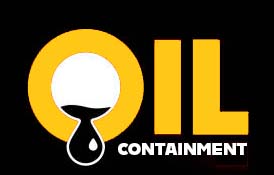In the oil industry, creating proper containment barriers is essential to prevent leaks and spills from causing harm to the environment and surrounding communities. Secondary containment researchers play a crucial role in developing and implementing effective strategies for containing oil and other hazardous materials. In this article, we will discuss the importance of containment barriers, the use of polyurea coatings, and best practices for creating reliable containment systems.
Importance of Containment Barriers
Containment barriers are used to prevent spills and leaks from spreading and causing environmental damage. In the oil industry, where large quantities of oil and other hazardous materials are transported and stored, having robust containment systems in place is crucial. Without effective containment barriers, a spill or leak could lead to contamination of soil, water sources, and air, as well as harm to wildlife and human health.
The Role of Polyurea Coatings
Polyurea coatings are frequently used in the oil industry for creating containment barriers due to their durability and chemical resistance. Polyurea is a type of protective coating that forms a seamless, waterproof barrier when applied to surfaces. This makes it an ideal choice for lining containment structures such as oil storage tanks, pipelines, and secondary containment berms.
Polyurea coatings can be sprayed or applied using other methods to create a thick, flexible barrier that can withstand harsh conditions and prevent leaks. The fast curing time of polyurea coatings also allows for quick installation, minimizing downtime and reducing the risk of leaks or spills during construction.
Best Practices for Creating Containment Barriers
When creating containment barriers in the oil industry, it is essential to follow best practices to ensure their effectiveness. Here are some key steps to consider:
- Conduct a thorough risk assessment to identify potential sources of spills and leaks.
- Determine the appropriate type of containment system based on the volume and type of hazardous materials being stored or transported.
- Select high-quality materials, such as polyurea coatings, that are compatible with the substances being contained.
- Ensure proper installation and regular maintenance of containment barriers to address any wear and tear or damage.
- Train employees on proper spill response procedures to minimize the impact of any leaks or spills that occur.
By following these best practices, secondary containment researchers can help create reliable and effective containment barriers that protect the environment and promote safety in the oil industry.
Conclusion
Creating containment barriers in the oil industry is essential for preventing spills and leaks from causing environmental damage. The use of polyurea coatings can help create durable and effective containment systems that withstand harsh conditions and prevent leaks. By following best practices and conducting regular maintenance, secondary containment researchers can ensure that containment barriers are reliable and protective. With proper containment barriers in place, the oil industry can minimize the risk of spills and leaks, protecting the environment and surrounding communities.
